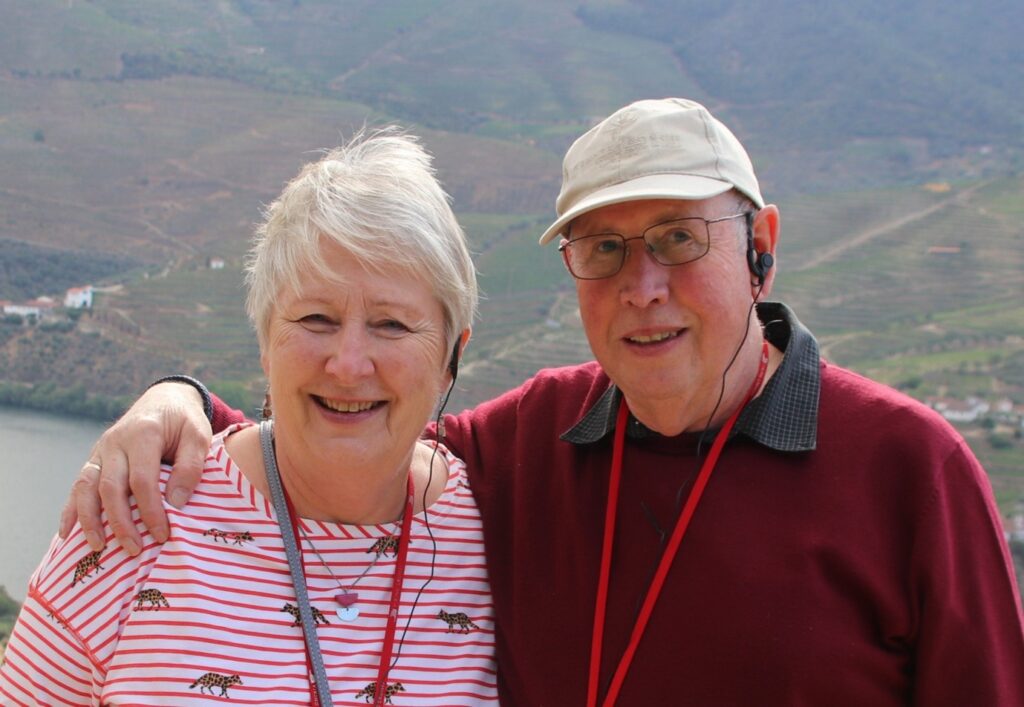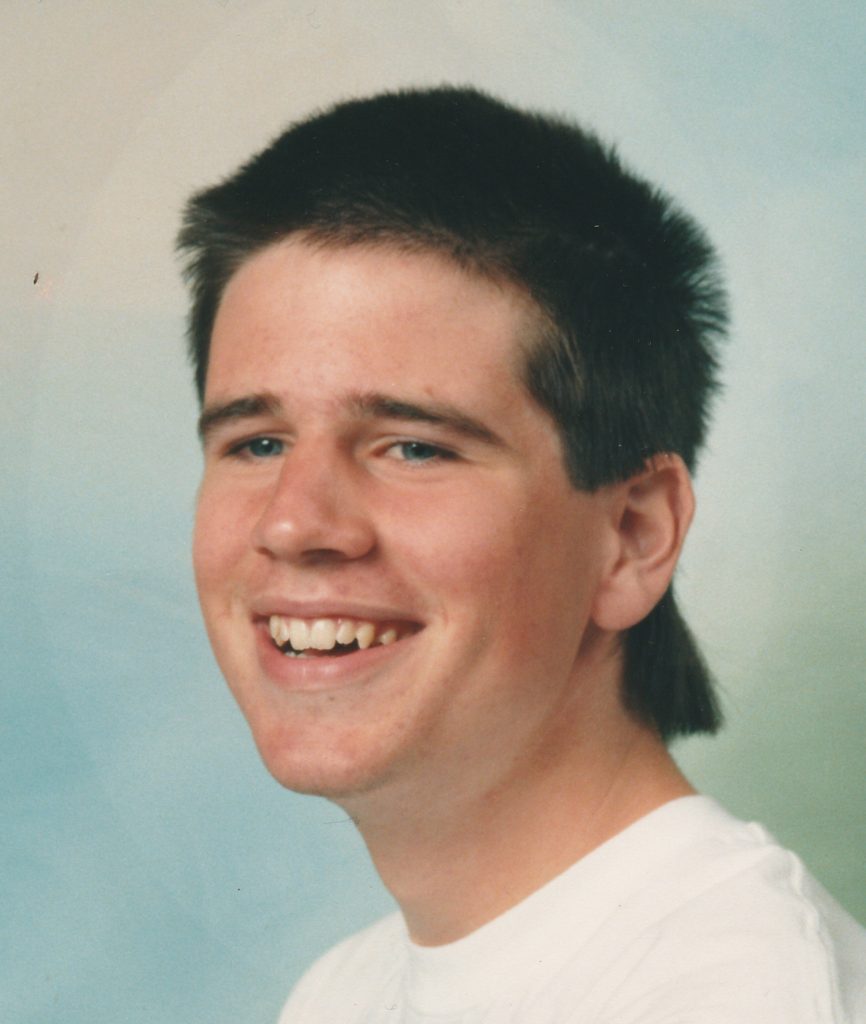
It was Friday, 18th December 1992, our last day at school: Neil aged 17 and in Y13, Alistair aged 15 and in Y10, my husband Ian from Sheffield University and myself a teacher but not at the same school as the boys. I’d been so proud that day as I’d taken in some professional photos of the four of us and some just of the two boys, the first ones I’d ever had taken and showed them to friends and colleagues. It was taken by a professional photographer, the son of a friend and taken at her house. She brought a set round Thursday evening. Little did I know that I wouldn’t be able to look at those photos again for over 6 months.
Sunday , 20th started as a normal day. We were baking for Christmas and the boys put up and decorated the Christmas tree. Neil was leader of the local venture scout unit, in fact he had set it up and got the group involved in conservation work in the Peak District, one of his passions. His applications to university to study geography had all been sent. He was also involved in the local scout post, Alistair too in his scout unit. Neil went off at about 7 p.m. to the local scout hut for a meeting. “See you later, mum” he said. I wouldn’t see him alive again. The lads phoned us at about 8 p.m. and said Neil had collapsed. This was in the days before mobile phones. There wasn’t even a phone in the building. The lads had run up to the nearest phone box. When we went down, there was an ambulance parked outside and seeing that was a shock but there was a bigger shock waiting for us when we walked in. The youngsters were stunned. Neil was lying on the floor, lifeless, being attended to by paramedics. They worked on him for a while, called for back-up and then took him by ambulance to the local hospital. Alistair didn’t want to come with us. We dropped him off at a friend’s and then drove to the hospital. “How is he”, I asked. “You’d better come in, the doctor wants to talk to you”. “I’m sorry”, she said. I couldn’t take this in. We went in to see Neil. I felt my knees giving way. This couldn’t be happening. “We love you so much.” I said. Outside in the waiting area a policeman said to us “And what sort of a party has he been to then”. It was only later that the callousness of this remark hit us.
We phoned family, picked up Alistair and drove home. Neil’s slippers were by the door, his toothbrush in the rack. How am I ever going to deal with this, I thought. The three of us slept in the same bed that night. Friends came round the next day. They thought there had been a mistake. Neil (my 17 year-old son) and Ian (my 47 year-old husband). It must be Ian, they thought. 17 year-olds don’t die. My dear friends abandoned their plans for Christmas, made endless cups of tea for visitors, fed us and supported us. Neil’s friends came round every day telling us about the pranks he had got up to. Leaving bits of cheese next to the mice they were going to dissect in their biology lessons. Making and selling sandwiches from my kitchen. Now I knew where it all the food from the fridge had disappeared to. I watched for the post hoping a letter would come to tell me it had all been a big mistake. I truly believe your mind can’t accept the enormity of a situation like this in one go and it is only gradually accepted. The phrase “coming to terms with it” takes a long time.
The funeral was arranged by the Scout Organisation in Dronfield. I don’t remember much about the organisation but I do remember those scouts including Alistair in their well-pressed uniforms lining the route of the coffin from the lych gate to the church door and I shall never, never forget the sight of that coffin next to the Christmas tree and crib scene at the base of the chancel steps. In fact for a few following Christmases I couldn’t bear to look at the tree. We buried Neil’s ashes in the church’s memorial gardens on a freezing cold January day, just the three of us and our dear Rector, Derek Palmer. He advised us not to scatter them but to have them in a place where the many people who loved Neil could come. Since then there is a living stone, a paving stone with Neil’s initials NCW near the church door.

Neil’s university acceptances started coming in after Christmas before his name could be removed from the system. And then the post-mortem. They didn’t know what had caused his death, only that his heart had stopped. The verdict was an open verdict, cause of death unascertained. Nothing could bring him back. This was just a piece of paper. How can you live with this, people asked me. I don’t have a choice, I said. It was only later and now almost 22 years later that the significance of that verdict has hit home.
CRY didn’t exist in 1992. I didn’t even find out about it until 2012 when after retiring and joining the Inner Wheel Club of Dronfield, the ladies asked me to be their President. I needed a charity. There was no doubt in my mind what I wanted to do. I googled Sudden Adult Death and CRY came up. It was just what I wanted. It was for young people. I could do something local. How I wish I had known about it before. I’m sure they would have helped us through those bleak years when we struggled on without any professional help. The three of us just distracted ourselves with work and studying. Alistair went on to study Natural Sciences at Cambridge University, did a Ph.D. in the USA and has been living in Boston since 2003.
To date we have held 23 screenings in Neil’s memory in North Derbyshire, North Nottinghamshire and South Yorkshire and have become CRY County Representatives for Derbyshire. We have met so many lovely people during this journey and have screened over 2200 young people referring many for further testing. We have two screenings booked for 2023 and we continue to give talks which not only raise awareness but many of them result in substantial donations. We are proud of our involvement with CRY and will continue to hold screenings as long as we are able. Without the support of our local community none of this would have been possible. We cannot thank everyone enough.





